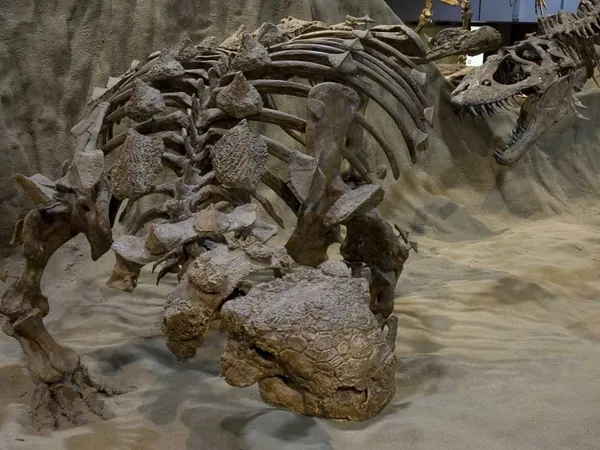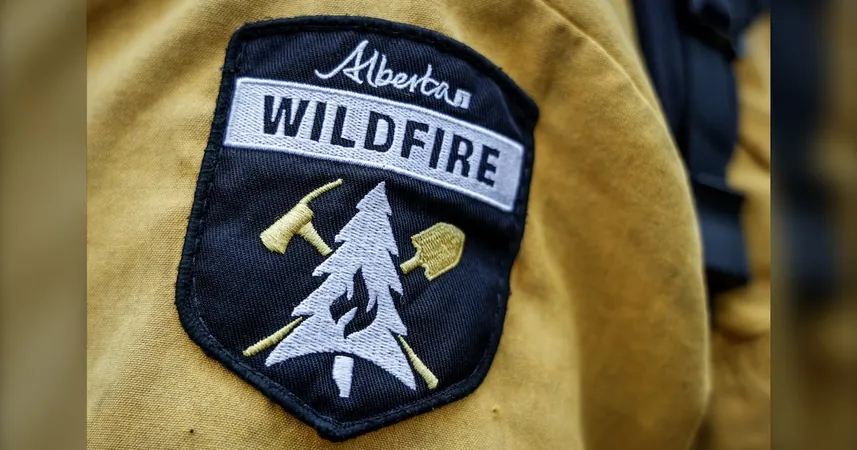
Unearthed: Footprints of a Club-Tailed Dinosaur in B.C. Confirmed!
2025-04-18
Author: Olivia
Mysterious Footprints Reveal Ancient Secrets
In a groundbreaking study, researchers in British Columbia have confirmed the existence of a fascinating three-toed dinosaur with a club-like tail. This discovery sheds light on the creatures that once roamed the region over 100 million years ago, during the formative years of the Rocky Mountains.
Exploring the Fossil Evidence
The study, recently published in the Journal of Vertebrate Paleontology, examined fossilized footprints found in the Tumbler Ridge area, northeast of Prince George, and in northwestern Alberta. This analysis reveals that these tracks belong to a previously unidentified species of ankylosaurid, marking a significant advancement in paleontological research.
Meet Ruopodosaurus clava!
The newly named species, Ruopodosaurus clava—which translates to "tumbled-down lizard with a club or mace"—was confirmed by Victoria Arbour, a paleontology curator at the Royal BC Museum. Arbour noted that while it was known these tracks belonged to ankylosaurs, the specific type had remained a mystery until now.
A Game Changer for Fossil Studies
This finding doesn’t only apply to B.C. and Alberta. Arbour believes that this research will assist scientists in identifying similar footprints around the globe. The clarity brought by the new identification could trigger a wave of renewed interest in exploring further fossil evidence.
Unique Characteristics of Ankylosaurs
Arbour highlighted how Ruopodosaurus differs from better-known relatives, like nodosaurids—more flexible, with four hind toes. The three-toed footprints of Ruopodosaurus add a new dimension to our understanding of these armored dinosaurs.
The Evolutionary Context
The ankylosaurs lived in an era characterized by lush coastal floodplains while the Rocky Mountains were still on the rise. This environment was teeming with life, hosting small to medium-sized predators and relatives of duck-billed dinosaurs, as well as giant crocodiles.
A Fascinating Discovery Journey
Some of the footprints were remarkably discovered by local citizens during hikes. Charles Helm, a scientific adviser at the Tumbler Ridge Museum, collaborated with Arbour to decipher these enigmatic tracks. Together, they filled in the gaps surrounding the evolutionary history of these creatures.
Unlocking the Past
While remains of tail-clubbed ankylosaurs from that era are scarce in North American fossils, Arbour's research aims to locate those missing bones. The continuing exploration could lead us to re-evaluate where we seek answers in the fossil record.
Embarking on a New Era of Discovery
With the confirmation of Ruopodosaurus in Canada, Helm expressed excitement over the implications for Tumbler Ridge, where ankylosaur tracks have been an integral part of the region's paleontological story since their discovery by two boys 25 years ago. This study heralds a new chapter in understanding our dinosaur heritage.
So, what might other findings reveal about our planet’s ancient past? The footprints of Ruopodosaurus clava open the door to numerous possibilities, reminding us that the earth’s history is laden with untold stories waiting to be uncovered.









 Brasil (PT)
Brasil (PT)
 Canada (EN)
Canada (EN)
 Chile (ES)
Chile (ES)
 Česko (CS)
Česko (CS)
 대한민국 (KO)
대한민국 (KO)
 España (ES)
España (ES)
 France (FR)
France (FR)
 Hong Kong (EN)
Hong Kong (EN)
 Italia (IT)
Italia (IT)
 日本 (JA)
日本 (JA)
 Magyarország (HU)
Magyarország (HU)
 Norge (NO)
Norge (NO)
 Polska (PL)
Polska (PL)
 Schweiz (DE)
Schweiz (DE)
 Singapore (EN)
Singapore (EN)
 Sverige (SV)
Sverige (SV)
 Suomi (FI)
Suomi (FI)
 Türkiye (TR)
Türkiye (TR)
 الإمارات العربية المتحدة (AR)
الإمارات العربية المتحدة (AR)